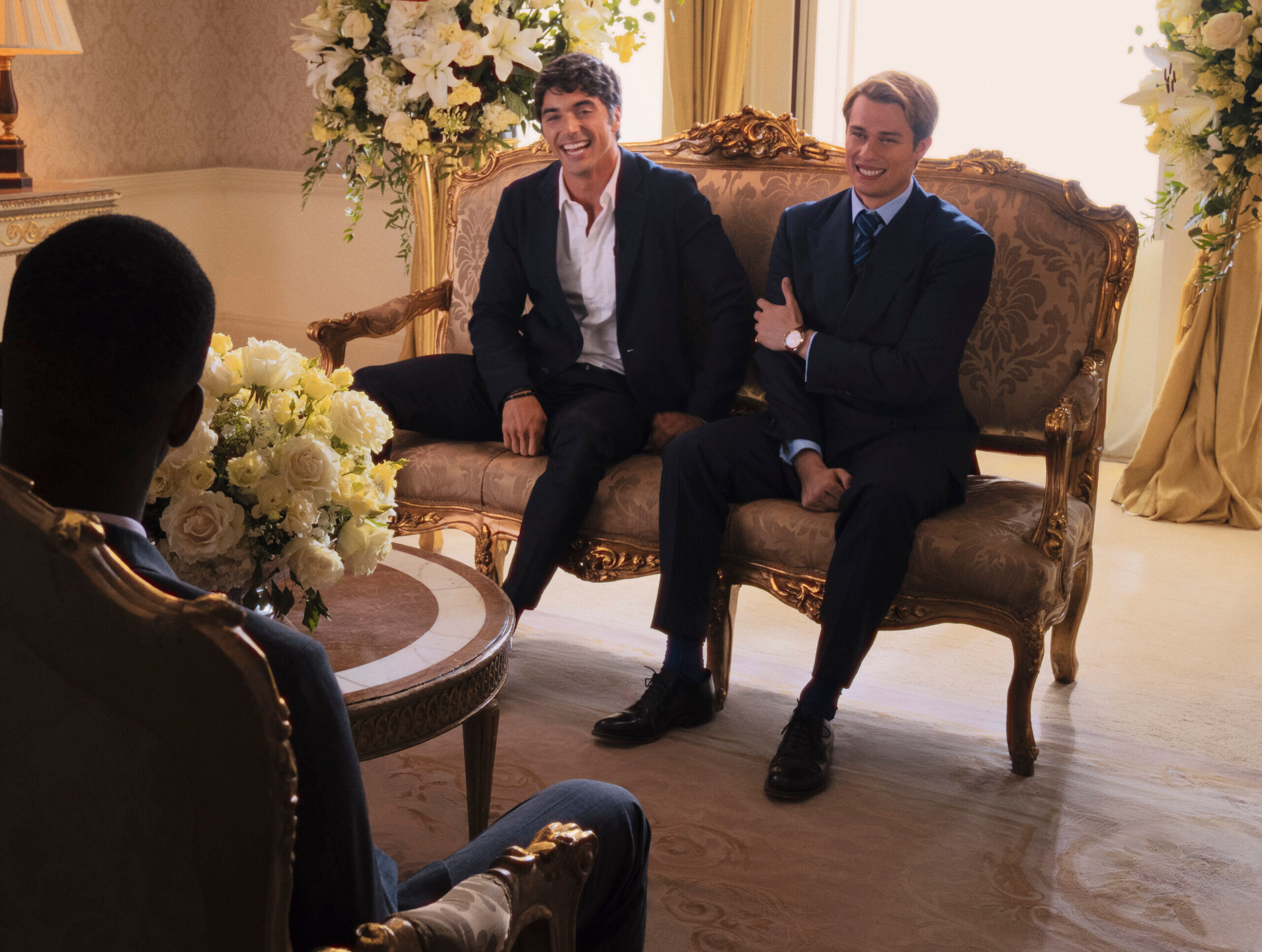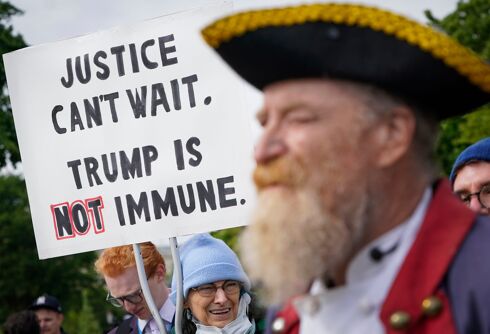I’ve been thinking about sex scenes in movies a lot lately. Apparently, a lot of people have. I keep hearing about the discourse around whether they’re necessary. And I won’t lie, I’ve wondered about that myself — mostly due to the fact that when I see sex scenes in mainstream movies, I almost always find myself thinking about how awkward and uncomfortable they must be to film, even with an intimacy coordinator. I’ve wondered whether they add enough to the narrative to put actors through all that. It’s less a prudish impulse than a kind of generalized sympathetic anxiety.
Lately, however, I’ve pretty much come around to the idea that, when done right, sex scenes do in fact add a lot to a film’s narrative. I’m not sure I can sum it up better than writer Glenn Weldon did in a discussion of Prime Video’s new gay rom-com Red, White & Royal Blue. Weldon said on NPR’s Pop Culture Happy Hour podcast: “Sex scenes delineate character. You see how someone approaches intimacy. You see vulnerability. You see, between two or more people, how power dynamics get kind of negotiated on the fly. It’s very important.”
Related:
This film’s NC-17 rating shows we still see queer sex as unsuitable for mainstream consumption
The depictions of nudity in “Passages” are not graphic. They are tastefully shot, nearly always obscured or fleeting.
The sex scenes in Red, White & Royal Blue in particular have generated a significant amount of discussion. GQ writer Lucy Ford called them “beautifully tender” and praised the film’s inclusion of fairly explicit gay sex in an unapologetically “schmaltzy” rom-com as “quietly radical.”
Dive deeper every day
Join our newsletter for thought-provoking commentary that goes beyond the surface of LGBTQ+ issues
“It is rare that any piece of mainstream media portrays gay sex with such specificity,” wrote Men’s Health’s Philip Ellis. “Not just the act itself, but the preamble, the all-important discussion and negotiation of who will be the receptive partner. And it is this casual realism that makes Red, White & Royal Blue stand out from other rom-coms on streaming.”
Even the hosts of Slate’s Outward podcast, who criticized the film for pandering to a straight cis female audience, gave it credit for its relatively frank — though not graphic — depiction of penetrative sex between two men.
Based on author Casey McQuiston’s 2019 novel and directed by Matthew López (writer of the Tony-winning play The Inheritance), the film centers on Alex (Taylor Zakhar-Perez), the son of the U.S. President, and Henry (Nicholas Galitzine), a British prince, who go from bitter rivals to friends to lovers and have to deal with the geopolitical ramifications of their relationship. In the midst of trying see each other while living in two different countries separated by an entire ocean and keeping their international long-distance relationship a secret while both are in the public eye, they manage to find time to have sex.
And the film does not shy away from showing us the sex they have or how they have it. In one scene, Alex and Henry “make love”— Henry’s very demure, very British euphemism for sexual intercourse — for the first time. The film’s screwball action slows, the music swells, the camera lingers on hands, lips, and the characters’ faces as they gaze lovingly at each other. It is, as Ford noted, tender.
At the same time, it is abundantly clear what is happening between these two men. We don’t see it, but we can tell — by the way Henry’s hand presses the small of Alex’s back, by the way Henry’s legs are lifted with Alex hovering over him — that these two men are indeed having penetrative sex. Where other films might have simply shown Zakhar-Perez and Galitzine side-by-side in bed or one lying on top of the other, Red, White & Royal Blue goes a step further to show the specificity of how gay men position their bodies to perform certain acts in real life.
The scene reminded me of one in Ira Sachs’s recent film Passages — the sex scene between Ben Whishaw and Franz Rogowski’s characters that reportedly earned the film an NC-17 rating. The two scenes — the two films — are, of course, very different. But they have in common an uncommon clarity about what sex between two men actually looks like and how it works.
Both López and intimacy coordinator Robbie Taylor Hunt have spoken at length in interviews about the importance of getting the film’s sex scenes right.
“I really wanted to show something that I hadn’t seen much of in mainstream movie making, which is sex between two men that is loving and connected, and that is emotionally resonant,” López told Digital Spy. “From the beginning, I told the studio that we were not going to shy away from the scene. There would be no tricks. It was going to be true and accurate to the way that two men have sex together.”
In an interview with The Hollywood Reporter, Hunt noted that mainstream films and TV rarely depict penetrative gay sex in a romantic context. They either pan away (Call Me by Your Name), leaving the ins and outs to the viewer’s imagination, or the sex is played for shock value, titillation, or even comedy.
“My one big gripe I have around queer sex scenes between men is that it’s often represented as rough and loveless; usually sex from behind, in moments of frustration or conflict, and there’s a sort of wrestle to them,” Hunt said. “Of course, that is true for some parts of people’s experiences, but I feel like it’s disproportionately represented because it is a more interesting thing for straight creators and to mainstream audiences.”
“It’s almost like straight audiences and straight creators can’t quite comprehend what loving sex between two men looks like,” he added.
When I wrote about Whishaw and Rogowski’s sex scene in Passages earlier this month, I said it was perhaps the most authentic depiction of the way gay men have sex that I had ever seen in a mainstream film. Similarly, while watching Red, White & Royal Blue, I thought about what it means that we rarely see queer sex depicted accurately outside of pornography.
Now, I am by no means an anti-porn crusader. Sex work is work, and pornography — when made ethically and by consenting adults with performers’ physical, emotional, and financial well-being in mind — is a legitimate form of entertainment. At the same time, porn is still largely taboo, and when it is the only context in which we see queer sex depicted authentically, the message is subtle, but clear: Queer sex, the way real queer people have it, is still taboo, is still dirty, is still something relegated to the shadows.
Red, White & Royal Blue is “quietly radical,” not just because it depicts sex between two men in a romantic context, but because the way it depicts Alex and Henry’s sweet, caring sexual encounter is authentic to the way it would look in real life. We don’t see every detail — we see far less even than in Passages. But we see enough to counter the subtle, insidious stigma that even the most well-meaning mainstream films about LGBTQ+ people have perpetuated for so long.
















“Red, White & Royal Blue” proves sex scenes can indeed be revolutionary